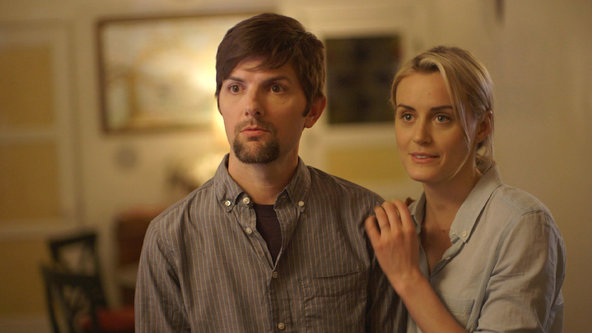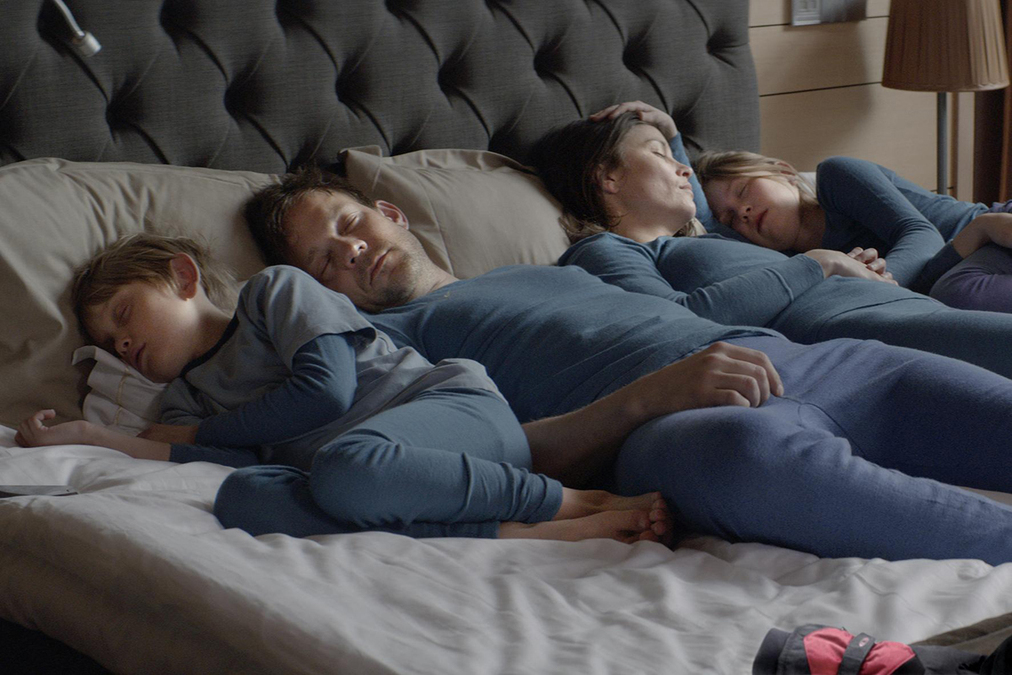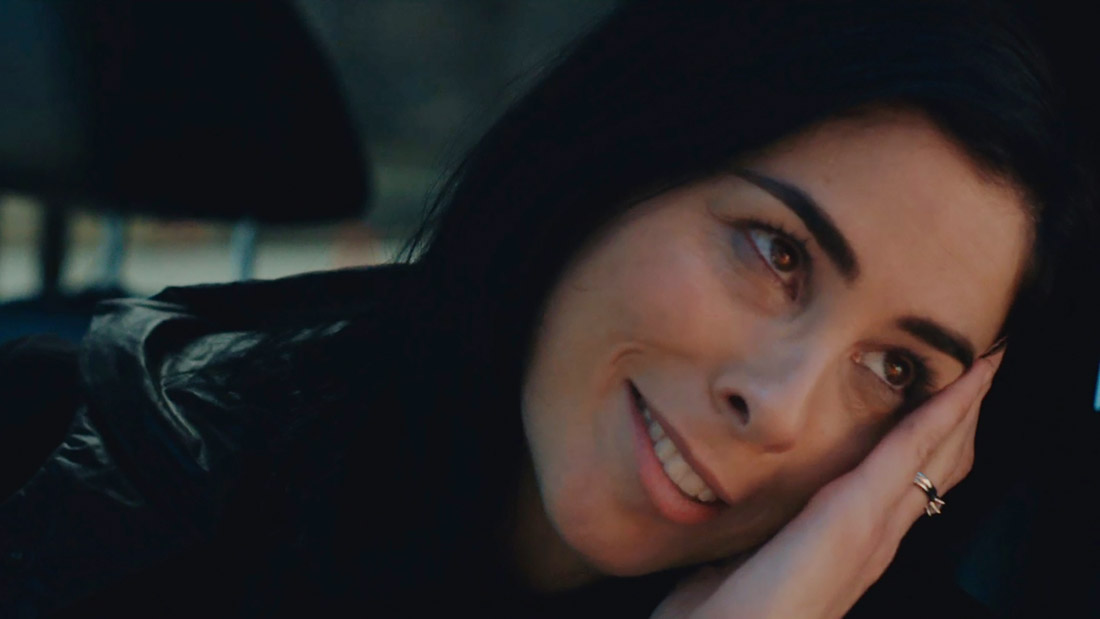By providing your information, you agree to our Terms of Use and our Privacy Policy. We use vendors that may also process your information to help provide our services. This site is protected by reCAPTCHA Enterprise and the Google Privacy Policy and Terms of Service apply.
Here are the Films That Inspired This Year’s Sundance Filmmakers, from ‘Amadeus’ and ‘Fargo’ to ‘Booty Call’

Jena Keahon

Prior to the Sundance Film Festival 2015, we sent out questionnaires to filmmakers with films in competition, asking them which films inspired them. The films they chose ranged from classics such as “The 400 Blows” and “A Clockwork Orange” to recent releases such as “Listen Up Phillip” and “Ida.” Many also named dark comedies, including “Happiness” and “Inside Llewyn Davis.” Some filmmakers listed television shows which inspire them including “Louie,” “Transparent” and “The Wire.”
Here are the filmmaker’s responses:
James Ponsoldt (“The End of the Tour”):”California Split,” “The American Friend,” “Withnail & I,” “Amadeus,” “The Hours and Times,” “Don’t Look Back,” “Fat City,” “The Social Network,” “Midnight Cowboy,” “Thunderbolt and Lightfoot,” “Happy Together” and “Scarecrow.”
Patrick Brice (“The Overnight”): The heightened sense of absurdity of early Zucker, Abrahams and Zucker films like “Top Secret” and “Airplane” was very important for me early on. The moment-to-moment descent into absurdity of “After Hours,” the long journey into the night of “Adventures in Babysitting” and “Booty Call” were actually all huge influences on me in developing this movie.
Jennifer Phang (“Adventageous”): Hard to say. We looked at “The Age of Innocence” for a few reasons: Conversations, coded dialogue, use of the color red. But co-writer Jacqueline Kim turned me on to “4 months, 3 weeks, 2 days” for its patient journey into self-awareness and life-changing decisions.
Alanté Kavaïté (“The Summer of Sangaile”): The work of Gus Van Sant inspires me a lot. But also Japanese cinema of the ’60s-’70s like Yasuzo Masumura, for example.
 Jim Strouse (“People, Places, Things”): So much inspires me. Too much to name here. Right now I’m very inspired by what’s happening in episodic television. I adore the rich, complicated tones of things like “Transparent,” “Louie” and “Fargo,” for instance.
Jim Strouse (“People, Places, Things”): So much inspires me. Too much to name here. Right now I’m very inspired by what’s happening in episodic television. I adore the rich, complicated tones of things like “Transparent,” “Louie” and “Fargo,” for instance.
READ MORE: Here’s What Sundance Cinematographers Think of Shooting Film Vs. Digital
Michael Larnell (“Cronies”): The movie “Stand By Me” was an inspiration because of the bonds between young males over the course of a day. “La Haine” inspired the black & white as well as three guys hanging together over the course of a day. Also, “She’s Gotta Have It” inspired the black & white as well as the interview technique I use throughout the film.
Jarrad Paul and Andrew Mogel (“The D Train”): We we very inspired by John Hughes movies – “Planes, Trains & Automobiles,” “Vacation,” “Sixteen Candles” and “Pretty in Pink” – maybe because the character is stuck in his high school persona and centers around this reunion. The movie feels like that time to us also because of the tone of those movies and how they balance the comedy and the drama.
Justin Kelley (“I Am Michael”): “Beau Travail,” “I Can’t Sleep,” “The Piano Teacher,” “Code Unknown,” “Fat Girl,” “Shame,” “Boogie Nights,” “All About My Mother,” “Fox and His Friends,” “In a Year With 13 Moons,” “Three Women,” “Ratcatcher,” “Ida,” “Elephant,” “Time to Leave,” “Before Night Falls,” “Breaking the Waves,” “Wild at Heart,” “Gummo” and “Happiness.”
Michael Beach Nichols and Christopher K. Walker (“Flex is Kings”): The work of Errol Morris definitely influenced our decision to approach the film as a thriller/Western genre-type documentary. Seeing “Pulp Fiction” in high school made me want to become a filmmaker (Michael Beach Nichols). The films of Terrence Malick strike a nerve and definitely inspire me, I’m really happy he seems to be working more lately (Christopher K. Walker).
 Nikole Beckwith (“Stockholm, Pennsylvania”): So many. I just saw “Force Majeure,” which was really inspiring and beautiful and heartbreaking and funny in the best ways. I was also really taken with “Foxcatcher” and how so much of the story was told in body language and silences. “We Need to Talk About Kevin” is a favorite for me; the storytelling is so stunning and arresting both visually and in the way it plays with time and unfolds inner vs. outer life. I love Miranda July’s films and how she makes up her own rules. “It’s a Wonderful Life” is one of my all-time favorite films… watching those blinky stars in the sky talk about our tiny world and giant hearts. So much darkness and levity in one story, and the juxtaposition of the fantastical elements used to explore the gripping realness of humanity.
Nikole Beckwith (“Stockholm, Pennsylvania”): So many. I just saw “Force Majeure,” which was really inspiring and beautiful and heartbreaking and funny in the best ways. I was also really taken with “Foxcatcher” and how so much of the story was told in body language and silences. “We Need to Talk About Kevin” is a favorite for me; the storytelling is so stunning and arresting both visually and in the way it plays with time and unfolds inner vs. outer life. I love Miranda July’s films and how she makes up her own rules. “It’s a Wonderful Life” is one of my all-time favorite films… watching those blinky stars in the sky talk about our tiny world and giant hearts. So much darkness and levity in one story, and the juxtaposition of the fantastical elements used to explore the gripping realness of humanity.
Craig Zobel (“Z for Zachariah”): I was very excited by watching post-apocalyptic films of the atomic age. These films that play almost like extended Twilight Zone episodes, and have a pop sensibility, but are also about pretty interesting psychological conundrums. I watched a ton of these types of films—great ones from the ’50s/’60s era, like “Five” or “The World, The Flesh, and The Devil”—to Cold War-era ones from the ’80s, like “The Day After,” or even “Night of the Comet.” Research for this project was a lot of that, with the occasional meditative 1970’s Russian sci-fi film mixed in.
Charles Poekel (“Christmas Again”): “The Conversation,” “Fires on the Plain,” “Harlan County USA.” But the most inspiring films to me are the ones from my peers. Last year it was “Heaven Knows What,” “Listen Up Phillip,” “Actress,” “Wild Canaries,” “Joy Kevin,” “Navajazo” and “Buzzard,” to name a few. That list could go on.
 Diego Ongaro (“Bob and the Trees”): “Ballast” by Lance Hammer for it’s ethereal beauty, the Dardenne brothers films for their effectiveness and realism, François Truffaut’s films, specifically “400 Blows,” “Stolen Kisses” and “Bed and Board” for following Antoine Doisnel’s life for 20 years (40 years before Richard Linklater), “A Fistful of Dynamite” by Sergio Leone for the epic saga and Ennio Morricone’s music, “Wrong Cops” by Quentin Dupieux for its wackiness, Kelly Reichart’s films, “Declaration of War” by Valerie Donzelli, “Fish Tank” by Andrea Arnold, “The Hunter” by Daniel Nettheim… and the television series, “The Wire.”
Diego Ongaro (“Bob and the Trees”): “Ballast” by Lance Hammer for it’s ethereal beauty, the Dardenne brothers films for their effectiveness and realism, François Truffaut’s films, specifically “400 Blows,” “Stolen Kisses” and “Bed and Board” for following Antoine Doisnel’s life for 20 years (40 years before Richard Linklater), “A Fistful of Dynamite” by Sergio Leone for the epic saga and Ennio Morricone’s music, “Wrong Cops” by Quentin Dupieux for its wackiness, Kelly Reichart’s films, “Declaration of War” by Valerie Donzelli, “Fish Tank” by Andrea Arnold, “The Hunter” by Daniel Nettheim… and the television series, “The Wire.”
READ MORE: Sundance 2015 Cinematographers on How They Captured Their Most Difficult Shots
Crystal Moselle (“The Wolfpack”): I love movies obsessively. So many films have inspired me in my life. The movie “Crumb” made me interested in documentaries at a young age. “Heart of Darkness” was inspiring because it made me realize that even the greatest directors suffer for their art. When I watch Harmony Korine’s films, they remind me that we can make anything happen — we don’t have to conform. I love “Strange Days.” I love all coming-of-age films.
Adam Salky (“I Smile Back”): So many. Here’s a handful that I deeply love, and that inspired me in making “I Smile Back”: “The Celebration,” “Belle De Jour,” “Interiors,” “Y Tu Mama Tambien.” Movies about flawed, human people in extraordinary psychological situations.
 Gerard Barrett (“Glassland”): So many films inspire me – anything from “Lawrence of Arabia” to a cinematic marvel like “Gravity.” Any film that affects me and gets under my skin, inspires me. More than anything, films that John Ford, Alfred Hitchcock and David Lean made inspire me. The skills they showed back then to bring stories to life on the screen was just breathtaking. I really do believe we take that generation of filmmakers for granted on a technical level, and what they achieved with essentially just a camera, some lights and incredible craftsmanship. We complain today because our computers are not fast enough for editing, etc.
Gerard Barrett (“Glassland”): So many films inspire me – anything from “Lawrence of Arabia” to a cinematic marvel like “Gravity.” Any film that affects me and gets under my skin, inspires me. More than anything, films that John Ford, Alfred Hitchcock and David Lean made inspire me. The skills they showed back then to bring stories to life on the screen was just breathtaking. I really do believe we take that generation of filmmakers for granted on a technical level, and what they achieved with essentially just a camera, some lights and incredible craftsmanship. We complain today because our computers are not fast enough for editing, etc.
Rick Famuyiwa (“Dope”): I made “Dope” as an homage to the many amazing independent and studio films of the 1990’s that rewrote the rules of mainstream entertainment. As I was in film school, movies like “Boogie Nights,” “Jackie Brown,” “Bottle Rocket,” “Menace 2 Society” and “Kids” motivated and inspired me. They were character-driven event movies with a singular voice. I pretty much just tried to steal as much as I could from them.
Michael Madsen (“The Visit”): I am inspired by the works of filmmakers such as Antonioni, Tarkovsky and Kubrick. I think film for them was a way of thinking, grasping and exploring reality, which is what I hope to do myself.
Brett Haley (“I’ll See You in My Dreams”): “Beginners,” “Inside Llewyn Davis,” “Lost in Translation,” “The Station Agent,” “Harry and Tonto” and “Five Easy Pieces” were big ones for this film. Cassavetes, Ozu and Jacques Audiard are always huge inspirations for me, personally. For my money, Audiard’s “The Beat That My Heart Skipped” is one of my all time favorites because it manages to be dark, funny, suspenseful, romantic, sexy, violent and moving all at once. I want my films to have that kind of affect.
Anouk Whissel, François Simard and Yoann-Karl Whissell (“Turbo Kid”): “BMX Bandits” – primarily for its costumes, the plastic-like colour palette and its friendship story; “The Road Warrior” – for its landscapes, action and post- apocalyptic scenario; “Cherry 2000” – for its sweet cheesiness and love story; Peter Jackson’s “Braindead” – for its slapstick practical gore effects; and the ridiculousness of Italian post- apocalyptic films. To all of this, we added our own signature of dark humor and action sequences filled with our style and rhythm.
Stanley Nelson (“The Black Panthers: Vanguard of the Revolution”): I don’t think I can say I’m inspired by any one film or set of films. I am inspired whenever I see a film that’s well-crafted and where the director has something to say about our lives today. There are so many documentary films that come out each year that have new and unique ways of storytelling. It’s those films that inspire me.
 Daniel Garcia and Rania Ettieh (“H.”): This year a few films definitely woke us up… “Under the Skin,” “Maps to the Stars” and “Ida,” to name a few. Roy Anderson’s “A Pigeon Sat on a Branch…” was also a treat, and in addition to the other two films of his trilogy, definitely an inspiration for its boldness and audacity.
Daniel Garcia and Rania Ettieh (“H.”): This year a few films definitely woke us up… “Under the Skin,” “Maps to the Stars” and “Ida,” to name a few. Roy Anderson’s “A Pigeon Sat on a Branch…” was also a treat, and in addition to the other two films of his trilogy, definitely an inspiration for its boldness and audacity.
J.M. Cravioto (“Reversal”): Much of my inspiration came from French-made thrillers from the early 90s and 00s. They inspired me in certain areas such as textures, atmospheres, and action pace. Funny enough, many people that have seen the film have described it as Fincherian (Finchery), whom is one of my favorite directors. I take this as a compliment since much of my work is inspired by him.
Anna Muylaert (“The Second Mother”): “A Clockwork Orange” by Stanley Kubrick, “Django Unchained” by Quentin Tarantino, “The Elephant” by Gus Van Sant, “The Royal Tenenbaums” by Wes Anderson, “Match Point,” by Woody Allen, “O Som ao Redor” by Kleber Mendonca Filho (Brazil). “Baixio das Bestas” by Claudio Assis (Brazil), “Whisky,” by Juan Pablo Rebella and Pablo Stoll, “Uruguai La Cienaga” by Lucrecia Martel (Argentina), “El Custodio,” by Rodrigo Moreno (Argentina) and “Amarcord” by Federico Fellini, among so many others.
Brenson Lee (“Seoul Searching”): For this particular film I was influenced by the ’80s teen movies of John Hughes, especially “The Breakfast Club.” I feel he brought a sense of depth to his characters and style through fashion and music that was uncommon for that genre. l’m also heavily influenced by Ang Lee who I respect for his strong character development and his ability to make Asian characters and stories universal for a broader audience. In terms of cinematography, I love the bold colors of Wong Kar Wai’s older movies and the extremely stylish and kinetic camera work of his DP Christopher Doyle.
Sophie Deraspe (“The Amina Profile”): I felt I had to find my own film language for “The Amina Profile.” But at the same time, I have a lot of admiration for the documentary approach found in “Capturing the Friedmans,” in which the story of an individual and his family expresses the demons of an entire society; also films like “The Act of Killing,” in which the act of filming and documenting, as well as re-enacting, dramatically changes the course of one’s awareness. Film can truly be powerful!
READ MORE: Rachel Morrison on Her Two Sundance 2015 Films and Being Pegged as a ‘Female DP’
By providing your information, you agree to our Terms of Use and our Privacy Policy. We use vendors that may also process your information to help provide our services. This site is protected by reCAPTCHA Enterprise and the Google Privacy Policy and Terms of Service apply.

















